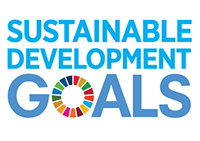1.4.1 Access to Basic Services
Definition
The proportion of the population with access to the following:
- Improved Sanitation Facilities
- Clean Cooking Fuels and Technologies
- Improved Water Source
- Electricity
Data Source(s)
World Health Organization’s (WHO) Global Household Energy Database. Retrieved from “https://www.who.int/airpollution/data/household-energy-database/en/”
WHO/UNICEF Joint Monitoring Programme (JMP) for Water Supply and Sanitation. Retrieved from “https://washdata.org/data/household#!/tto“
 1.4.1 Access to Basic Services in the Sustainable Development Goals
1.4.1 Access to Basic Services in the Sustainable Development Goals
Click on the SDG to reveal more information
1. End poverty in all its forms everywhere
Extreme poverty rates have been cut by more than half since 1990. While this is a remarkable achievement, one in five people in developing regions still live on less than $1.90 a day, and there are millions more who make little more than this daily amount, plus many people risk slipping back into poverty.
Poverty is more than the lack of income and resources to ensure a sustainable livelihood. Its manifestations include hunger and malnutrition, limited access to education and other basic services, social discrimination and exclusion as well as the lack of participation in decision-making. Economic growth must be inclusive to provide sustainable jobs and promote equality.
Related 1.4.1 Access to Basic Services Targets
By 2030, ensure that all men and women, in particular the poor and the vulnerable, have equal rights to economic resources, as well as access to basic services, ownership and control over land and other forms of property, inheritance, natural resources, appropriate new technology and financial services, including microfinance